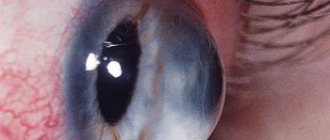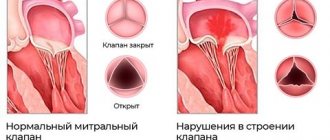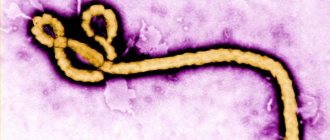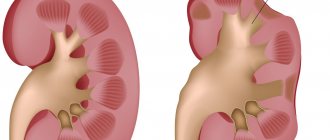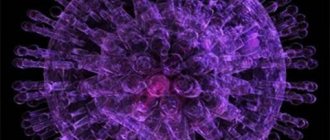The causative agent of polio is the enterovirus Poliovirus hominis. The virus is well adapted to survive in an aggressive environment. It lives in sunlight for up to 30 days and is not afraid of cold or household chemicals. At room temperature, the death of the virus occurs only after 90 days. All this explains its ability to cause mass infection and the ease of transmission from a sick person to a healthy person.
Poliomyelitis is transmitted primarily in two ways:
- through direct contact (through touch, shared objects, food);
- by air from sick people and carriers.
Cases have been recorded in which the disease was transmitted through flies and other insects.
Epidemics often begin in summer and autumn. The most common method of infection is airborne droplets. The virus enters the throat with a stream of air, settles on the lymph nodes and begins to reproduce itself. Next, the pathogen passes to other lymph nodes on the body, penetrates the intestines, then into the blood. Further damage to the central nervous system - the spinal cord and brain - is possible.
The entry of a virus into the body does not always cause the disease in its full form. Often the disease is asymptomatic or mild. Most of the sick are children from one to 5 years old.
What are the forms of polio?
Depending on the child’s immunity, polio can progress in different ways. There are several forms of the disease.
- The atypical inapparent form is the absence of any symptoms of the virus. The body manages to defeat the virus even before it begins to have a significant impact on it. Those who have had inapparent polio often have no idea that they had the disease. Only a blood test for antibodies can confirm the fact of the disease.
- Atypical abortive form - the absence of specific polio syndromes, but the manifestation of general symptoms of infection. Headache, runny nose, weakness, slight increase in temperature resemble a common cold. There is no damage to the central nervous system. Symptoms disappear after a week without special treatment. This is the most common form of polio.
- The typical non-paralytic form is the manifestation of symptoms of polio with damage to the central nervous system, but in the absence of paralysis. Serous meningitis is diagnosed.
- The typical paralytic form is the manifestation of symptoms of the polio virus with damage to the central nervous system and paralysis. The virus can cause paralysis of various muscle groups: muscles of the legs, arms, torso, diaphragm, face.
Diagnostics
In the preparalytic stage, it is quite difficult to suspect polio. Often, the doctor mistakes the disease for the flu, acute respiratory infections, ARVI, intestinal infection or serous meningitis. To diagnose polio, it is necessary to undergo laboratory tests, identify significant symptoms, and establish an anamnesis.
The biomaterials for analysis are: blood, cerebrospinal fluid, nasopharyngeal mucus, feces.
Basic laboratory tests:
- Isolation of poliovirus from nasopharyngeal mucus and/or feces.
- An enzyme-linked immunosorbent assay aimed at detecting IgM antibodies.
- Test for complement fixation reaction (increase in antibody titer in paired sera).
A lumbar puncture of cerebrospinal fluid may be performed. The pressure under which it flows, the level of transparency, the proportion of protein and glucose are assessed. Inflammatory changes in the cerebrospinal fluid are characteristic of paralytic forms. The normal composition is preserved in pontine and mild spinal forms.
Analysis of blood pH (acid-base balance). A decrease in pulmonary ventilation is characterized by a decrease in blood oxygen saturation (hypoxia) and the removal of carbon dioxide (hypercapnia). As a result of respiratory disorders, the pH of the blood changes, which leads to acidosis or alkalosis.
Normally, the pH of venous blood is 7.34 - 7.43, arterial from 7.38 to 7.46. When carrying out the analysis, the following is determined:
- blood oxygen saturation level (O2);
- carbon dioxide (CO2) content;
- alkaline reserve (blood bicarbonate).
An increased carbon dioxide content above 70% and a decrease in blood oxygen saturation to 90% and below are direct indicators for artificial ventilation.
Instrumental diagnostics
Electromyography can confirm the presence of lesions in the anterior horns of the spinal cord. Pathological changes are recorded in the bioelectric potentials of the neuromuscular periphery. This allows us to identify the nature of the process, the depth and prevalence and depth. Damage to motor cells in the anterior horns of the spinal cord is expressed by obvious changes in rhythm.
There is a relationship between the severity of muscle damage and changes in the electromyogram. In case of serious damage, electromyograms are characterized by “bioelectric silence,” i.e., a very low amplitude (20-50 μV) and rhythm (6-10 Hz) are noted in the paralyzed muscle.
Spirometric and pneumotachometric studies (determining the functional capacity of the respiratory organs). To identify respiratory disorders, three indicators are determined: the volume of one breath, minute volume and vital capacity of the lungs. The obtained data are compared with the age norm. If there is a decrease in the vital capacity of the lungs by 25% or less, then this is an indication for the use of artificial ventilation.
It is also important to carry out differential diagnosis to exclude diseases with similar symptoms. Among them are tick-borne encephalitis, meningitis, botulism, acute polyradiculoneuritis, Coxsackie viruses, ECHO, enterovirus 71. The type of polio virus can also be differentiated through polymerase chain reaction analysis. However, this is not mandatory, since, as mentioned above, only type I polio remains.
What are the symptoms of polio
Symptoms of polio vary in different forms of the disease. The incubation period lasts from 6 to 12 days.
In the atypical form, the main symptoms are:
- weakness;
- headache;
- temperature increase;
- sweating;
- runny nose;
- abdominal pain;
- vomit;
- diarrhea;
- rash.
Typical symptoms include:
- muscle pain;
- backache;
- decreased muscle tone;
- labored breathing;
- difficulty swallowing;
- speech disorder;
- confusion;
- paralysis;
- paralytic edema;
- meningeal syndrome;
- uncontrolled urination;
- coldness of hands and feet;
- pressure instability;
- reflex disorder.
Adverse reactions
The combination polio vaccine, often used in infants, is generally well tolerated. There may be redness or painful swelling at the injection site. Allergic reactions are also possible.
As the immune system reacts to the vaccine, it may temporarily cause various illnesses. These include, for example:
· headaches and aches;
· gastrointestinal discomfort;
· fever and fatigue;
· irritability and chills.
These vaccination reactions usually resolve on their own within 1-3 days.
How does polio progress?
In atypical forms without paralysis, polio occurs without consequences for the body, symptoms disappear after a week, the patient fully recovers and acquires immunity to polio.
In typical forms, the course of the disease is more severe. The paralytic form is especially dangerous. Spinal cord cells gradually die, causing muscle paralysis. Without movement, muscles die and are no longer restored. When the cells of the medulla oblongata die, the patient dies. Fatal cases also occur as a result of paralysis of the diaphragm: the patient dies from suffocation. The likelihood of a patient's death increases if a bacterial infection is added to a viral infection.
The mortality rate among adult patients is higher than among children. Although polio is considered primarily a childhood disease, it is also dangerous for adults. Adults should not neglect polio prevention.
Prevention
In 1988, governments created the Global Polio Eradication Initiative
(GPEI) to rid humanity of this disease forever. Following widespread use of the polio vaccine, the incidence of the disease fell sharply in many industrialized countries. Since 1988, the number of polio cases has decreased by more than 99%, from 350,000 to 73 cases reported in 2015, according to WHO. All infants and children should be vaccinated against polio. The American Academy of Pediatrics recommends vaccination at 2 months, 4 months, and 6 to 18 months, and a booster dose at 4 to 6 years of age, and childhood vaccination confers immunity in >95% of recipients.
Adults are usually not vaccinated. Unvaccinated adults traveling to endemic or epidemic areas should be vaccinated with IPV; Vaccination includes 2 doses administered 4–8 weeks apart and a 3rd dose 6–12 months later. At least 1 dose - before travel. Vaccinated adults traveling to endemic or epidemic areas should receive 1 dose of IPV again. Immunocompromised patients and their households should not use OPV.
If we talk about the prevention of polio at the household level, it means: refusal to swim in dirty bodies of water that are not suitable for this; compliance with personal hygiene rules; refusal of potentially dangerous products. In this sense, raw milk is undesirable - a pathogen is often found in it; quarantine measures if a child with a disease is detected in a children's group.
What are the complications after polio?
Poliomyelitis in mild forms does not cause complications.
In severe forms of the disease, complications are possible. Among them:
- paralysis of the legs, arms, torso, neck and face;
- difficulty breathing, speech, swallowing;
- brain damage;
- delayed development of the bones of the affected limbs;
- bone tissue atrophy;
- deformation of the hands and feet;
- rachiocampsis.
The degree and severity of complications is influenced by the state of immunity, the quality of treatment and rehabilitation. Thus, deformation of joints and bones can be avoided if the patient is immediately placed in bed with the torso and limbs secured. Timely diagnosis and treatment reduces the risk of irreversible paralysis and nervous disorders.
Types of vaccines
Various vaccines are available, which are administered by a doctor using a syringe in several single doses. Polio vaccination for infants is often combined with other vaccines. The combination vaccine is distributed over four single doses: the first is given to infants at the age of 3 months, the last - in the second year of life.
Types of polio vaccines:
· Vaccination with OPV (oral polio vaccine).
It comes in the form of drops and contains weakened forms of two types of viruses. Passive immunity is produced in the intestines.
· Vaccination IPV (inactivated vaccine).
It has the form of a homogeneous suspension, available in disposable 0.5 ml syringes. It contains three types of “dead” viruses.
OPV is cheaper. The drug is produced in Russia and has good reviews. Inactivated polio vaccine is an imported product. The drugs have certain differences and have their own side effects and positive aspects.
The RebenOK clinic uses several drugs. Names of the polio vaccine:
· "Pentaxim". Designed for children from three months of age. The national vaccination schedule involves three injections with an interval of one and a half months and further revaccination after a year. The second revaccination (fifth administration of the drug) is carried out with OPV or IPV.
· "Bivouac Polio". Live polio vaccine, which consists of three doses of a weakened oral vaccine and two doses of an inactivated vaccine. It is carried out in the first year of life. Booster vaccination against polio is carried out one year after receiving the first dose.
· "Infarix Hexa". A combined drug that does not have strict preparation requirements. The vaccine is effective against polio, tetanus, diphtheria, whooping cough, Haemophilus influenzae, and hepatitis B.
· "Polimilex". A single drug that is widely used for the prevention of polio. Injected subcutaneously or intramuscularly. The drug is “dead”, so it cannot cause the development of the disease.
The choice of drug remains with the doctor. Many experts prefer to use combination vaccines. If a child has contraindications, then single medications are prescribed.
How to identify polio
Successful treatment of polio requires accurate diagnosis. The disease often has vague symptoms, reminiscent of a common cold or acute respiratory viral infection, which makes timely detection of the pathogen difficult.
Diagnosis of polio in children is carried out by a pediatrician and an infectious disease specialist. An analysis of blood, urine, feces, nasal mucus, and, if necessary, cerebrospinal fluid is performed.
If polio is suspected, the patient is immediately sent to an infectious diseases hospital. It is important to closely monitor the patient to distinguish polio from other illnesses and ensure adequate treatment.
Sources
1. World Health Organization.
Poliomyelitis // Newsletters. — 2021. https://www.who.int/ru/news-room/fact-sheets/detail/poliomyelitis/ 2. What is Polio? // Centers for Disease Control and Prevention. — 2021. https://www.cdc.gov/polio/what-is-polio/index.htm/
3. Samarina V. N., Sorokina O. A. Children's infectious diseases. For doctors of all specialties. — 4th ed., rev. and additional - St. Petersburg, M.: Nevsky Dialect-Binom, 2011. - 336 p.
4. Order of the Ministry of Health No. 125n. “On approval of the national calendar of preventive vaccinations and the calendar of preventive vaccinations for epidemic indications.” garant.ru (March 21, 2014). Date accessed: May 28, 2021.
How to treat polio
An effective cure for polio has not yet been found. All sick people are hospitalized. This is necessary to protect surrounding people and prevent complications in the patient during the acute period. The hospitalization period lasts from 40 days.
Treatment consists of quickly relieving acute symptoms. In case of severe pain, anesthesia is performed. High fever is treated with antipyretic drugs. Additionally, the patient receives vitamins. In the acute period, which lasts up to 6 weeks, strict bed rest is recommended. Medical personnel use pillows and bolsters to ensure the correct position of the torso and limbs, this reduces the risk of deformation of the shape of the bones. Prevention of bedsores is carried out. If the diaphragm and intercostal muscles are damaged and breathing is insufficient, resuscitation is necessary. If swallowing functions are impaired, liquid nutrition is supplied through a tube.
After the acute period ends, the patient's rehabilitation begins. The condition of the muscles and central nervous system after illness depends on the quality of rehabilitation. Muscles that have not completely lost activity are restored by gymnastics, massage, acupuncture, and swimming. For complete paralysis, electrical muscle stimulation, massage, baths, acupuncture, paraffin therapy and other thermal procedures are prescribed. Spa treatment in specialized institutions is recommended.
Medicines also prove useful during the rehabilitation period. Drugs are prescribed to improve blood supply to the brain, stimulate nerve impulses, and hormonal drugs.
To prevent contractures, wearing orthopedic shoes, splints, and bandages is recommended. They protect weakened legs from deformation, correct the shape and position of the feet and joints.
Complications after polio can be corrected surgically. Surgeons perform muscle and tendon plastic surgery, bone resection and osteotomy, joint resection and prosthetics.
Polio treatment is carried out by a wide range of specialists - pediatricians, therapists, neurologists, surgeons, infectious disease specialists, immunologists, orthopedists, and rehabilitation specialists.
Routes of infection
The source of infection is a sick person. In most cases, the disease is asymptomatic. For every case with a pronounced clinical picture, there are from 100 to 1000 asymptomatic cases in which the pathogen is detected only by laboratory analysis.
The virus is transmitted by the fecal-oral route. You can catch the infection through dirty hands, contaminated food or water. In rare cases, polioviruses are transmitted through respiratory droplets.
With the fecal-oral route of infection, the virus begins to multiply in the lymphoid tissues of the intestine. And in the case of airborne droplets - in the lymphoid tissues of the nasopharynx. The virus then enters the bloodstream and spreads throughout the body.
It is noteworthy that a person becomes contagious even before symptoms develop (if this is a case with clinical manifestations). Viral particles are detected in nasal mucus within 36 hours after infection, and in feces after 3 days.
A person is most contagious during the first week of illness. Polioviruses are released from the nasopharynx within a week, and from the intestines - up to 6 weeks.
Immunity after illness
After an illness or vaccination, a person develops immunity to poliovirus.
However, such protection is type-specific - it is formed for a specific type of virus. Thus, a person can become ill again if they are infected a second time with a poliovirus of a different serotype. Antibodies to the polio virus are also passed from mother to child. If a woman is sick during pregnancy, the antibodies penetrate through the placenta into the baby’s bloodstream, where they remain for up to a year.
Today, polio does not occur in pregnant women. There were many such cases before mass vaccination. In pregnant women, polio progressed longer and more severely. The disease increased the risk of congenital anomalies and intrauterine fetal death.
Post-polio syndrome
After suffering from polio, some patients continue to have limited capabilities and a number of manifestations for many years (on average 35 years), the most common of which are:
- progressive muscle weakness and pain;
- general weakness and fatigue after minimal exertion;
- amyotrophy;
- breathing and swallowing disorders;
- breathing disorders during sleep, especially sleep apnea;
- poor tolerance to low temperatures;
- cognitive impairment - such as decreased concentration and difficulty remembering;
- depression or mood swings.

